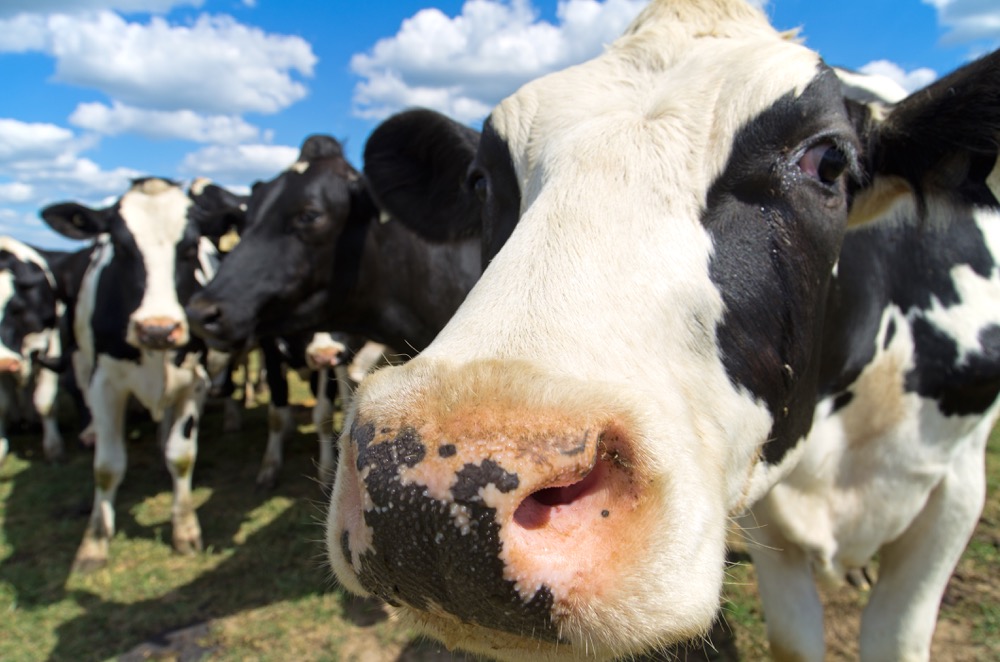I read with dismay that British grocer giant Tesco was cutting more jobs in its grocery stores from the fresh counter and replacing those employees with vending machines.
I thought about how that put another league of distance between people and their food. Is it any wonder farmers feel there is such disconnect with the consumer?
Around the same time the Canada’s Food Guide was released stirring a pot of emotion. Commodities got busy to protect and own their space. Counter-arguments flew in regards to eating meat and eggs and drinking milk. As the food animal industry hit the media, the online consumer comments were often vicious.
Read Also

The great food summit adventure
Alberta Farmer columnist Lee Hart attended the Food Leadership Summit in Calgary, where about 400 ag industry players gathered for the new annual conference.
Regardless of how the industry presented the case for more consumption of animal proteins, it provoked those supporting plant-based diets.
In considering the situation, I recalled speaking at an animal rights forum in Winnipeg. As I walked in the room, two women called me a “murderer” as I was there representing the food animal sector’s point of view. As each group presented their thoughts, they found no argument from me. They had a right to their opinion.
- More with Brenda Schoepp: Infrastructure is the foundation of food security
When it was my turn, I gently and accurately talked about the role of food animals in society, starting with the history of hunting and gathering, and moving through how cooking changed our eating patterns. Later, I brought into the discussion how honourable those animals were through their multitude of uses and their value to humanity. Through stories and examples — and without any defensive language — I was able to engage the group in a respectful conversation regarding the interrelationship between food animals and humans.
How does this relate to the food guide?
Certainly, there are always new and alternative ways of knowing and doing and of eating. And to date, that has been a good thing as we grow with our knowledge and make changes on the farm and at the table.
I think of my own choices. To this day I love whipping cream, but that does not make litres of it good for me. Limiting the good things in life is to our benefit and also preserves them as special, desirable, and memorable.
My question is: At this point in history when consumers love farms and their farmers, should the agricultural community be on the defensive or take a gentler approach that appreciates the cyclical nature of all things — including eating fads? (How much kale are you still eating?)
I appreciate that the food animal sector is concerned but the food guide is just that — a guide.
And although it is misguided in promoting plant-based protein for environmental reasons and I question the low-fat dairy push, it is filled with a great variety of foods that support every industry.
Should animal protein be asking for more steak at supper, eggs in the omelette, or milk in the mug? Or is this an opportunity to help folks learn how to use the product?
And should industry not be stepping up to the plate to help ensure everyone in Canada has access to the food they need?
Do you see the difference?
The four million Canadians who are food insecure would be happy with access to the food in the guide. The one million Canadian children who are malnourished would welcome a glass of milk. To support the call for drinking more water, let the animal protein sector be a leader in advocating for and preserving pure, clean water for all. And if there is a desire to sell folks animal-based protein, then teach consumers and children how to prepare a meal and help them choose local or Canadian product.
What people eat is none of my business as they make choices based on their own physical, age, cultural and health needs and the budget they are working within.
I don’t argue with the young mom who pops processed food in the microwave after working all day. But when she asks for help in learning how to cook, I jump at the chance.
I encourage students to consider preparing a big meal on Sunday that includes all the food groups, and then freezing what’s left over to eat later. They are often away from home, overwhelmed, and not eating properly. Opening the doors on that discussion respectfully helps them maintain their health.
What I do appreciate in the guide is the encouragement to get children involved in the process of meal preparation.
Recently, I took out a carton of cream for some neighbourhood children who had clamoured into my kitchen. I simply whipped it. They were amazed — they did not know that a carton of whipping cream became the much anticipated whipped cream.
Vending machines won’t replace patient and knowledgeable teachers, and food guides will be adjusted in each household.
The cycle will always return to our relationship with our food and more importantly our relationships to each other. Food animal agriculture has an opportunity to make its product a protein of choice with a broader and more inclusive vision.
















